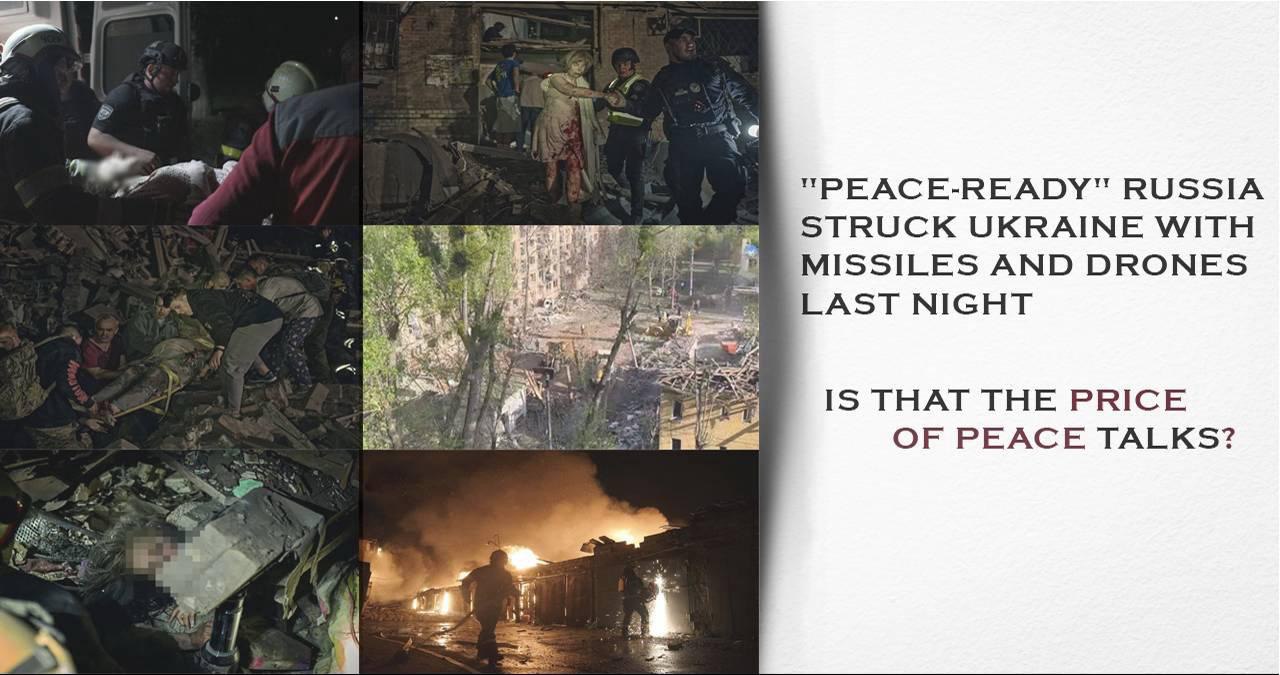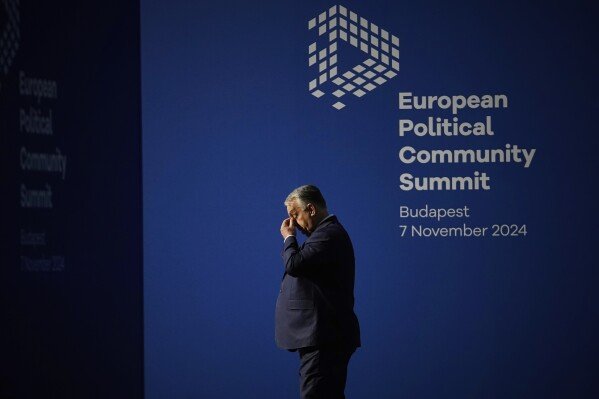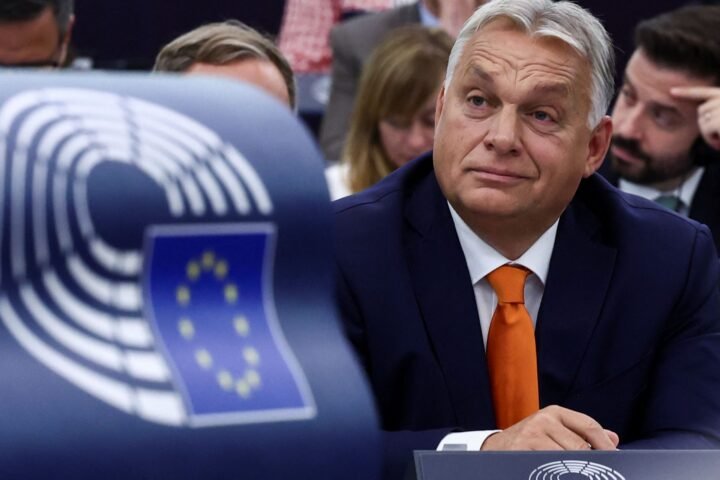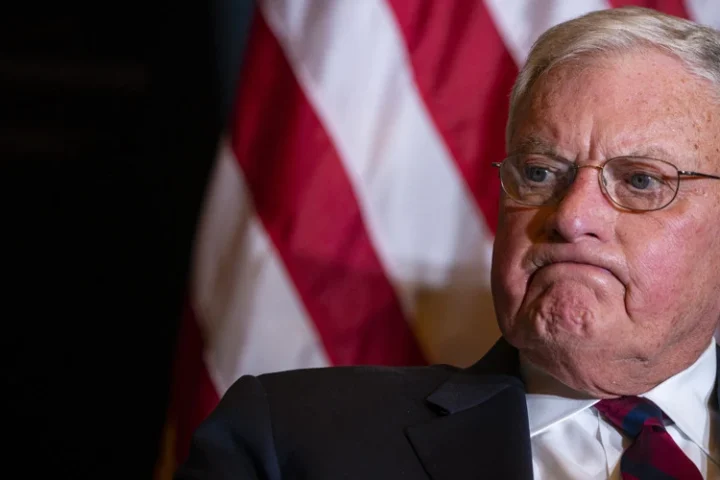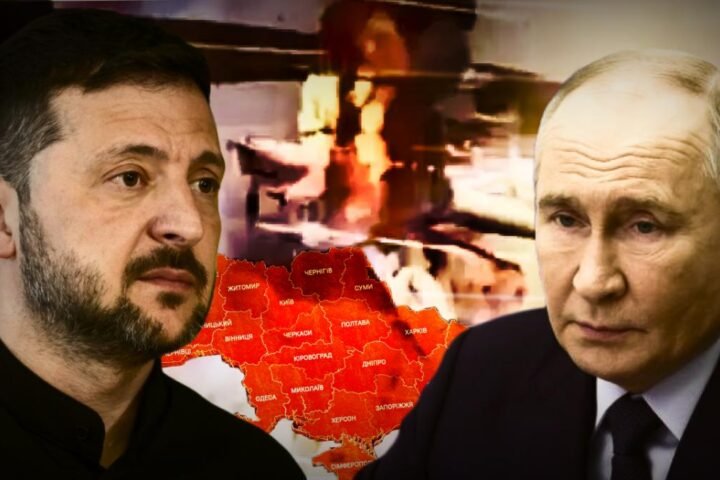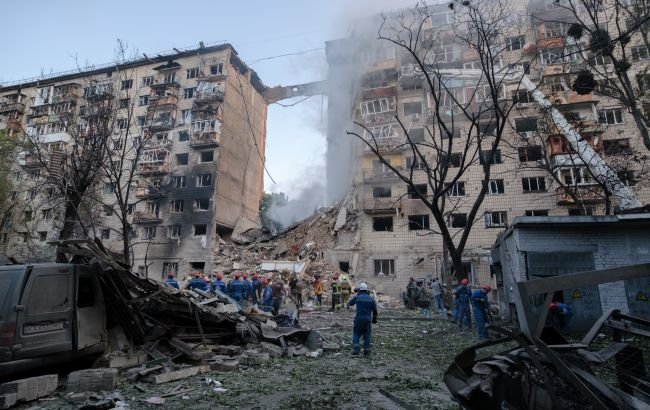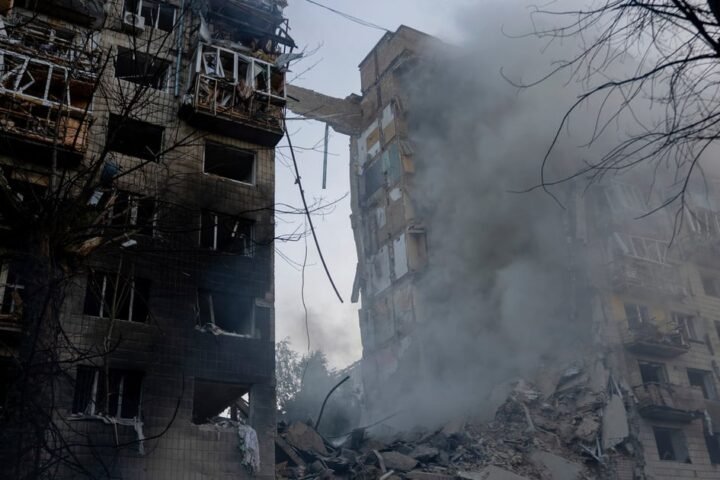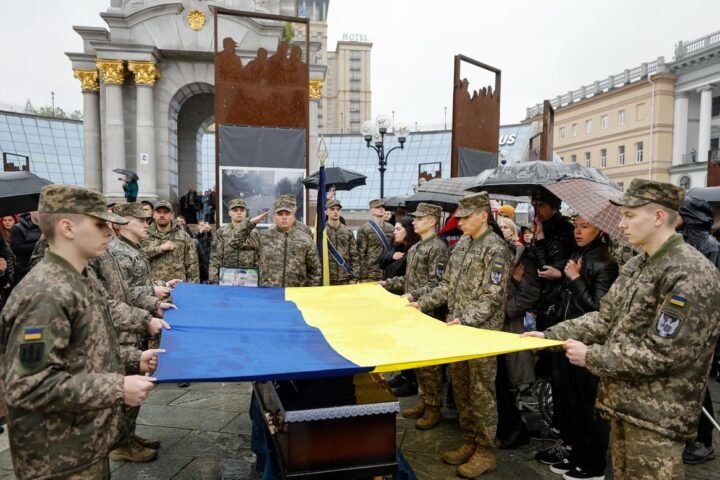The night of April 23–24, 2025, marked one of the heaviest attacks on Ukraine in recent months. Before dawn, air raid sirens blared across Kyiv and more than a dozen other cities as Russia launched a massive overnight assault involving 215 airborne targets — cruise missiles, ballistic missiles, and kamikaze drones. Fires engulfed residential buildings, schools, power stations, and railway depots. At least nine people were killed and over 70 injured, including children.
The attack was intense and coordinated: Ukrainian forces reported one missile strike, 76 airstrikes, and nearly 4,700 artillery shellings in a single night. The bombardment came in waves from midnight until sunrise, with more than 1,100 kamikaze drones and over 70 guided bombs targeting civilian infrastructure.
Kyiv, Kharkiv, Zhytomyr, and Pavlohrad were hit the hardest. Air raid alerts rarely fell silent, and the scale of firepower made it clear — no city, large or small, is truly safe.
But this is more than a Ukrainian tragedy. It’s a warning that echoes far beyond the country’s borders. If Ukraine falls, Russian aggression won’t stop there. American support for Ukraine and NATO is not about a distant conflict — it’s about halting a military machine that will only grow bolder if left unchecked. For every American who values peace and global stability, this is a moment that demands attention.
Toll on Civilians and Infrastructure: A Week of Escalation Before the April 24 Mass Attack
In the days leading up to the massive April 24 strike on Ukraine, Russian attacks had already been intensifying, leaving a devastating human toll and widespread destruction across multiple regions. The figures from April 16 to April 23 reveal the brutal rhythm of daily strikes on civilian life:
April 16, 2025
• Affected: 79 people
• Killed: 7 (3 each in Donetsk and Dnipropetrovsk regions, 1 in Kherson)
• Injured: 72 (including 28 in Dnipropetrovsk, 17 in Kharkiv, 16 in Kherson)
April 17, 2025
• Affected: 84
• Killed: 16 (including 5 in Kherson, 3 in Donetsk, 2 each in Dnipropetrovsk, Zaporizhzhia, Sumy, and Kharkiv)
• Injured: 68 (25 in Donetsk, 21 in Kherson, 10 in Sumy)
April 18, 2025
• Affected: 135
• Killed: 4 (2 in Kharkiv, 1 each in Donetsk and Kherson)
• Injured: 131 (122 in Kharkiv alone)
April 19, 2025
• Affected: 28
• Killed: 6 (3 in Sumy, 2 in Donetsk, 1 in Kherson)
• Injured: 22 (including 6 in Kharkiv and 5 in Donetsk)
April 20, 2025
• Affected: 8
• Injured: 8 (7 in Donetsk, 1 in Sumy)
April 21, 2025
• Affected: 33
• Killed: 5 (3 in Kharkiv, 1 each in Kherson and Sumy)
• Injured: 28 (including 13 in Kherson, 5 in Dnipropetrovsk, 4 in Sumy)
April 22, 2025
• Affected: 109
• Killed: 5 (4 in Donetsk, 1 in Zaporizhzhia)
• Injured: 104 (including 40 in Zaporizhzhia, 22 in Kharkiv, 12 in Kherson)
April 23, 2025
• Affected: 101
• Killed: 14 (9 in Dnipropetrovsk, 4 in Donetsk, 1 in Chernihiv)
• Injured: 87 (including 60 in Dnipropetrovsk)
Each number represents more than a statistic — it’s a life altered, a family shattered. These consecutive days of bombardment show a systematic escalation in Russia’s tactics targeting civilian populations. The deliberate frequency and spread across different regions demonstrate a strategy of pressure meant not only to exhaust Ukraine’s defenses but to terrorize its people.
A Week of Escalation: 577 Affected, 57 Killed, and 520 Injured
In the seven days leading up to the massive April 24 assault, 577 civilians were affected across Ukraine. Among them, 57 were killed and 520 injured. These are not just statistics — behind every number lies a shattered home, a destroyed school, a ruined hospital.
War’s toll is often reduced to numbers, but on April 24, the damage could not be measured in buildings alone. It was about broken families and stolen futures.
Kyiv:
The night of April 23–24 brought destruction to five districts of the capital. Fires raged through residential buildings and garages. Entire apartment blocks smoldered for hours as rescue teams worked to pull survivors from the rubble.
Kharkiv:
Over 20 drones and missiles struck the city. Schools, apartment buildings, and critical infrastructure were hit. Dozens were left without shelter or heat, with spring nights still cold and unforgiving.
Zhytomyr and Region:
Explosions rocked residential neighborhoods. Emergency crews battled multiple fires, racing against time.
Pavlohrad and Other Cities:
From central to eastern Ukraine, cities woke to shattered windows, burned-out vehicles, and craters too numerous to count before noon.
This was not a single night of terror. It was the culmination of a week of deliberate escalation — a coordinated attempt to push Ukraine’s defenses to the edge, and to remind the world of what happens when support falters.
Why This War Is Not “Someone Else’s Problem”
To many in the U.S., the war in Ukraine may feel distant — a far-off conflict with no direct bearing on American lives. But for those in Europe, especially Ukraine’s neighbors, the reality is stark: this war does not politely stop at borders. And if left unchecked, it won’t.
Security is interconnected.
The scale of the April 24 attacks serves as a blunt reminder: European stability and American security are deeply linked. If Russia advances westward, NATO — and the United States as its principal force — will face a far more direct threat.
NATO’s purpose has never been to start wars, but to prevent them from reaching New York, Chicago, or Dallas. This shield only holds when all allies stand together. When America steps back, the weight shifts to Europe, increasing — not decreasing — the risk of broader conflict.
Polls across both the U.S. and Europe show that support for Ukraine remains strong, but doubts are growing louder. For those uncertain voices, the devastation of the April offensive speaks louder than any speech. Allowing Russia to continue without consequence means accepting a more dangerous world — from Warsaw to Washington.
The next wave of missiles may not stop at Lviv. It could cross over Warsaw, or beyond. Standing with Ukraine is not just about defending a distant country. It’s about defending the peace that Americans value at home.
The facts are clear: this threat does not end at the edge of a map.
After April 24, many in Europe no longer see Russia’s aggression as distant thunder. It’s a storm rolling west. For the average European, every new missile strike in Ukraine sounds an alarm. This is not just Ukraine’s war — it’s Europe’s buffer and, by extension, America’s front line.
When cities like Kyiv face devastation, Europeans are asking: What happens if American and NATO support fades?
The answers are not reassuring.
Europe Without U.S. and NATO Support: A Fire with Half the Engines
Imagining a Europe without strong U.S. and NATO backing is like imagining a city trying to fight a wildfire with only half its fire trucks. Today, American support functions as a shield — a reminder to aggressors that expansion comes with a cost too high to bear.
But what happens if that shield weakens?
1. Weaker Defenses Against Missile and Drone Attacks
Europe’s air defenses remain patchy and underdeveloped, especially in its eastern regions. A sudden barrage of missiles or drones could overwhelm local capacities. Even well-prepared Western European nations would struggle to respond quickly to a large-scale attack without U.S. coordination and resources. Analysts have warned that in a scenario without American backing, Europe’s ability to defend itself against Russian strikes would be severely compromised.
2. Heightened Risk of Invasion or Land Seizures
History is filled with examples of opportunistic aggression. When the Soviet Union invaded Hungary in 1956 and Czechoslovakia in 1968, it moved fast, sensing weakness. Today, the Baltic states — Estonia, Latvia, and Lithuania — remain vulnerable. NATO’s core promise of collective defense, underpinned by U.S. force, is what keeps those borders secure. A diluted American role would signal opportunity to adversaries.
3. Hybrid Warfare on Steroids
Russia doesn’t always lead with tanks. Instead, it deploys cyberattacks, energy blackmail, disinformation campaigns, and sabotage. Recent years have seen hospitals hacked, power grids disrupted, and trains halted in EU countries. Without a strong transatlantic alliance, these tactics could become weekly occurrences — not rare incidents. From bomb threats to pipeline explosions, the signs are already visible.
Russian interference in European elections is no longer a theory — it’s a reality. Destabilizing democracies through misinformation has become one of the Kremlin’s sharpest tools. As detailed in multiple reports on Russia’s shadow war against the West, the frontlines are digital, political, and psychological.
4. Energy Leverage Returns
Europe hasn’t forgotten the winters when Moscow cut off gas supplies. Without American logistical and diplomatic support to help diversify energy sources, Putin’s influence over millions of European homes would only grow stronger. Energy independence becomes fragile when unity fractures.
5. No Fantasy: Real Scenarios of Territorial Conflict
Russia’s strategy isn’t hypothetical. The annexation of Crimea began with unmarked troops. In a weakened NATO scenario, border regions in Eastern Europe could become flashpoints again. Missiles fired on Ukraine could just as easily be aimed at Warsaw, Vilnius, or Prague. While national armies would respond first, it is U.S. support that often marks the line between a damaged border and a devastated continent.
A Return to Old Shadows
No European nation wants to return to the days when fear came from the East each night. That’s why those who remember past invasions view support for Ukraine not as charity — but as common sense. As hybrid attacks intensify, the cost of retreat will be paid not just in Ukrainian cities, but in towns and capitals across the continent.
For Europeans, these are not theoretical threats — they are weekly headlines. A strong, united NATO with American strength at its core is what has preserved peace. Without it, every nation from the Baltics to the Balkans begins to feel the ground shift beneath their feet.
Why U.S. Support Matters — For Peace in Europe and Security at Home
After another brutal night of missile strikes across Ukraine, the need for strong American support has never been clearer. Cities burned. Homes collapsed. Families picked through the rubble. But this destruction is not just a Ukrainian tragedy — it’s a warning for millions across Europe. And for Americans, especially those far from any front line, this war isn’t as distant as it may seem on the map.
For those who ask, “Why should we care?” or “What’s in it for America?” — fair questions deserve real, practical answers. The stakes aren’t abstract. They’re strategic, economic, and deeply personal.
1. Holding Back a Flood Before It Spreads
Think of Ukraine and NATO as a dam holding back chaos. When it holds, the cities downstream sleep peacefully. But if it breaks, the flood doesn’t stop at the riverbank. Russian aggression unchecked in Ukraine won’t end there — it will ripple across borders, threaten other allies, and pull the world into deeper instability.
2. Stopping Russia Before It Gains Momentum
Every missile intercepted over Kyiv is one less risk creeping westward. If the Kremlin faces no resistance, it grows bolder. But U.S. support signals a red line — a wall Russia cannot breach without consequence. Deterrence works best when it’s visible, credible, and backed by strength.
3. Protecting U.S. Trade and Global Stability
American products — cars, machines, electronics, energy — rely on stable European infrastructure. Roads, ports, and railways across the continent are vital arteries for global commerce. Instability in Europe disrupts these flows, risking jobs in cities like Houston, Detroit, and Cleveland. Peace in Europe protects the U.S. economy.
4. Avoiding Another Costly American War
The earlier threats are stopped, the less likely it is that American troops will have to fight a future war. Support now — through aid, equipment, and intelligence — is cheaper, safer, and far more effective than boots on the ground later. This is not about endless war. It’s about preventing the next one.
5. Ukraine’s Fight is an Investment in Peace
Support for Ukraine is not charity. It’s strategic insurance. Experts agree: it’s more efficient and far less expensive to help allies defend themselves now than to intervene militarily after the fact. When allies stand strong, America doesn’t have to stand alone.
When Ukraine holds the line, the world sees American leadership. When Ukraine falters, the world questions American resolve.
Europe remembers what happens when dictators go unchallenged. Americans should remember too.
The Danger of Inaction: Geopolitical and Economic Risks for the U.S.
History has shown us the consequences when dictators believe no one will stop them. If the U.S. and its allies retreat, global partners will start to worry — can America’s word still be trusted?
Nations like Taiwan and Israel are watching. If Ukraine is left to fend for itself, adversaries from Beijing to Tehran will believe U.S. promises mean less. This could raise future threats and drag the U.S. into even more unstable situations. Moscow and its allies are paying attention. If Ukraine is abandoned, Russia will grow stronger, and China or Iran could test boundaries elsewhere.
History offers painful examples. In the 1930s, appeasement led to greater war, not less. In Syria, inaction allowed risks to build, forcing the U.S. to intervene later. When America hesitated, chaos — and the price tag — grew larger.
U.S. Support for Ukraine as a Warning Signal
Supporting Ukraine now sends a strong message — the U.S. is standing with its allies and keeping problems away from home. It’s not just about defending one country; it’s about defending a system of global order that benefits all nations.
The Future of NATO, the European Economy, and American Jobs
America’s prosperity is closely tied to Europe’s stability. When businesses thrive abroad, demand for American products rises. NATO not only maintains peace but ensures the wheels of commerce continue turning.
Europe is a crucial market for American cars, airplanes, technology, and food products. Disruption in Europe means fewer orders for U.S. factories and farmers. Billions of dollars in American military equipment, vehicles, and grain help maintain the security of U.S. allies — and preserve American jobs. This support strengthens local economies in cities like Ohio, Kansas, and Alabama. A strong NATO means less of a financial burden for U.S. taxpayers, as a united NATO shares the cost of peace.
The U.S. is also one of the largest exporters of defense equipment to Europe, from advanced jets to missiles. U.S. agriculture finds stable markets in European grocery stores. Over 1.1 million American jobs depend on trade with Europe and NATO allies. In short, a stable Europe secures American wallets and communities. Supporting Ukraine and NATO isn’t just about missiles and defense. It’s about jobs in Ohio, wheat fields in Kansas, and factories in Alabama. Europe is not a distant continent; it’s a key trade partner and ally whose peace reverberates all the way to Main Street in America.
When American leaders decide to support Ukraine and NATO, they’re not choosing an abstract ideal. They’re choosing real security, real jobs, and lasting peace. It’s an investment in American strength at home and a defense line far from U.S. borders.
Ukraine’s Pain and America’s Choice
The smoke still hangs over the streets of Kyiv, where neighbors comfort each other in the wreckage of their buildings after the missile strike of April 24. This is what unchecked aggression looks like: broken families, injured children, shattered lives — not fate, but a deliberate choice to attack. These scenes do not stay confined within Ukraine’s borders. They press on Europe’s heart and test America’s resolve.
The decision to support Ukraine and NATO is not about distant nations or abstract ideals. It’s about creating a world where Americans keep their jobs, businesses continue to sell, and families live without the fear that war could come to their doorstep. Turning away is not avoiding problems. It’s an invitation for a bigger problem, with tougher terms, down the road.
Every missile intercepted in Ukraine protects more than Ukrainian skies. It’s an action that makes peace stronger — from Main Street to Mississippi.
For those watching from afar: now is the time to be heard. Urge leaders not to retreat, but to stand with those defending freedom against brute force. Let Kyiv’s pain become more than just another headline — let it remind us all what America’s choices mean for tomorrow’s security and prosperity.
